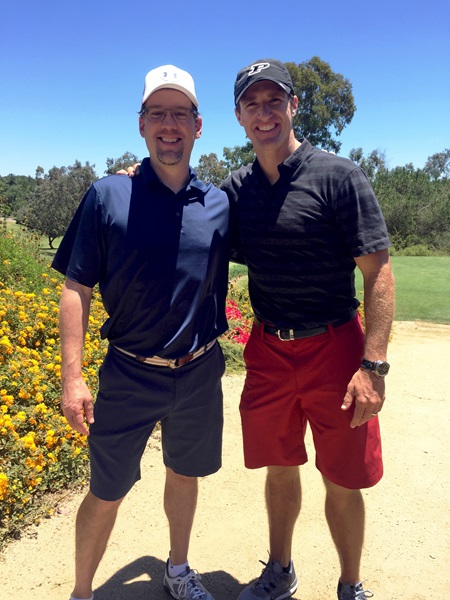By
Brad Cleveland
|
Date Published: May 30, 2025 - Last Updated May 30, 2025
|
Comments
I once had the opportunity to play golf with four NFL quarterbacks: Drew Brees, Carson Palmer, Chase Daniel and Drew Stanton. It was part of a high school fundraising auction that included a dozen lucky bidders. I don’t play golf often, and when I found out I’d won a spot, I actually had to be talked into going. As it turned out, the atmosphere was relaxed and the day was a lot of fun. (For the golfers out there — we played scramble.)

We took turns as designated cart drivers. With Drew Brees trustfully sitting beside me, my low-bar objective was clear: don’t tip over and end up on the evening news. Beyond that, I was fascinated by the inside perspective these quarterbacks shared. Their world has all the drama, politics and pressure you’d find in any high-stakes profession. Some dismiss their role as trivial — just a game, after all, and look at those astronomical salaries. But I see it as one of the purest forms of leadership. Out of the millions of kids who grow up dreaming of playing quarterback in the NFL, only 32 start each week. And if they don’t perform — or can’t get their teams to perform — they’re out.
Drew Brees (who has since retired) is a Super Bowl MVP who holds about as many collegiate and NFL records as it takes me shots to get through a round of golf (in other words, a lot). But what stood out most wasn’t the accolades — it was how naturally he gave credit to others: staff, receivers, offensive linemen. And when things didn’t go as hoped, he took responsibility. That’s what Professor Jim Collins describes as “Level 5” leadership.
Jim Collins and his team identified five levels of leadership in the book Good to Great. Though over two decades old, it remains one of the most influential business books of all time. The top two levels of leaders are both effective. A level 4 leader catalyzes commitment to a vision and rallies support to achieve high performance. Level 5 leaders go further — they possess the rare combination of humility and a ferocious will for the organization to be remarkable. Their focus is on leaving the organization stronger than they found it, capable of sustaining success long after they’ve moved on.
So, how do you lead an organization strong enough to thrive into the future — especially one that puts customers at the center? It starts with leadership mindset and behavior. Here are four key priorities:
1. Look beyond today’s customer expectations
It’s not enough to meet current needs. Leaders must continually ask: Where are our customers going? What will matter to them six months, one year, or five years from now? Customer feedback is valuable, but a culture of customer advocacy is what sets top-performing organizations apart. It means every employee — regardless of role — feels connected to improving the customer experience and empowered to act on behalf of the customer. That clarity of focus doesn't happen by accident. It’s built by leaders who consistently communicate a compelling vision and connect the dots between decisions and the customer impact.
2. Empower each person to reach their potential
Think about the most influential leaders in your life — teachers, coaches, mentors. They saw something in you. They challenged you, supported you and gave you room to grow. Great CX leaders do the same for their teams. They understand that sustainable customer experience excellence comes from engaged employees who are growing, contributing and connected to purpose. They create environments where every voice matters and where people can discover talents they may not have even known they had.
3. Build strong but simple systems
Companies like Disney, Apple, Amazon and Toyota didn’t become icons just through innovative products or flashy branding. They built and maintained systems and processes that are relentlessly focused on making things easier and better for customers. Those systems are scalable, repeatable and adaptable — and they’re as relevant to a 10-person firm as to a global enterprise. The key isn’t the technology itself. It’s how it’s used. Leaders must guide teams to shape tools and workflows that remove friction and enable great experiences.
4. Lead with humility
Customer experience is never the job of one person or even one department. The best leaders listen deeply, involve others in decision-making and create space for collaboration. They operate with what Jim Collins calls the “mirror and window” principle. When things go well, they look out the window and credit the team. When things go wrong, they look in the mirror and take responsibility. That kind of leadership earns trust — and sets the tone for a culture where customer experience isn’t just a goal, but a way of working.
Culture Follows Leadership
Organizations don’t become customer-centric through slogans or scorecards alone. They get there through leadership — through the example set at the top, the questions that are asked and the priorities that are reinforced day after day. As Drew Brees demonstrated so clearly, leadership isn’t about calling the plays — it’s about lifting up those around you, taking ownership and leaving the team better than you found it.
If you want a customer-driven culture, lead the way.